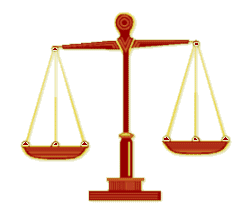Primary and secondary legislation facts for kids
In countries with a parliamentary system of government, there are two main types of law: primary legislation and secondary legislation. Primary legislation means the big, main laws made by the parliament itself, like an Act of Parliament. Secondary legislation, also called delegated legislation, is when the parliament gives permission to another part of the government (like a minister or a special group) to make smaller rules and laws.
In the European Union (EU), there are also primary and secondary laws. A third type is supplementary law. This includes International law and helps fill any gaps between the main laws and the smaller rules.
Contents
Primary Legislation: The Big Laws
In parliamentary systems, the legislative branch (the parliament that makes laws) is usually the most powerful. In other types of government, like a democracy, the three parts of government – the law-making part, the law-carrying-out part, and the law-judging part – often have equal power.
When a parliament makes a law, it's called an act. This act must be followed by the other parts of the government. Acts are made when most of the lawmakers vote for them. The exact way this happens is a bit different in various countries.
How Laws Are Made in Parliament
Many parliaments have two parts, or "chambers." For example, the United Kingdom (UK) has the House of Commons (the lower house) and the House of Lords (the upper house).
A new law starts as an idea, called a bill. It usually begins in the lower house. For the bill to become a law, it must be approved by both houses. Some countries have a "one-chamber" parliament, where a bill only needs to pass one house. Once a bill becomes an act, it is the law. Judges and courts usually have very little power to say that a law is wrong or unfair.
Primary Laws in the United States
In the United States, a main law made by the federal government is called an Act of Congress. If a law gives permission or responsibility to a government agency, it's called an authorizing statute. Rules made by the executive branch (like the President's team) or by a state government because of a main law are called regulatory laws.
Secondary Legislation: The Smaller Rules
Secondary legislation (also called subordinate legislation) includes all other laws that are not main Acts of Parliament. It's quite similar to administrative law in the United States.
Often, the parliament gives power to ministers (important government officials) to create these secondary laws. Secondary laws can also be directives, regulations, and decisions made by special commissions or councils. Most main laws in the UK include parts that allow for these smaller, secondary laws to be made.
Types of Secondary Legislation
There are two main types of secondary legislation:
- Delegated legislation allows other parts of the government to make changes to a law when needed. This means they don't have to start a whole new bill in parliament every time a small change is required.
- Prerogative legislation refers to special powers given to certain officials to create laws, rules, or regulations.


